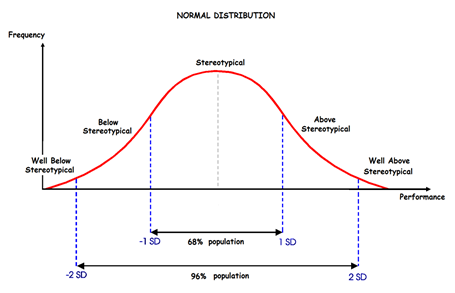Arts and business – an enriching relationship?
by Uwe Bauer | Jun 3, 2022
The work environment has changed dramatically, and we live in a VUCA world, a world of volatility, uncertainty, complexity, and ambiguity, or in a nutshell: we have to face the “unknown unknowns”!
How to navigate?
How to build a strategy?
How to develop a mission and vision?
The fundamental question is: do we have a framework or space and place in your organization to address these challenges?
We need both creativity and the capacity for innovation, two main characteristics generally attributed to artists. The arts can offer meanings to make sense in a world of increasing complexity, which cannot be fully understood with scientific forms of logic and sense-making. The arts are dealing with that complexity, thereby offering novel ways of responding. May this be the answer? Bringing artists and arts into the business to help “seeing more and seeing differently” open new horizons and better spot new opportunities?
In my research for the Executive Doctorate in Business Administration, I addressed the question how arts based initiatives (ABIs) impact the value creation capacity of a business organization. ABIs, also known as artistic interventions, mean that people, practices, and products from the arts are brought into an organization to address certain issues. People in the organization undergo an aesthetic experience, and the arts are embedded as a business asset. ABIs may include all kinds of artistic activities such as “Improvisation theatre,” “group painting,” “playing music together,” “theatre,” “experiencing art together,” or any other artistic activity. The point is that people in the organization are actively involved and challenged in the art projects. Buying some artworks and hanging them in the boss’ office does not count!
What exactly happens when an ABI is taking place in an organization?
ABIs offer the opportunity and the atmosphere to drop the tools of traditional logic and rationality and to gain access to responses such as intuition, feelings, improvisation, imagination, and empathy. The power of ABIs lies in the engagement with the unknown, the ‘not-knowing’, and their role in developing employees’ capacity for ‘mindful organizing’ to deal with the unexpected.
Besides all the positive impacts attributed to ABIs, my research findings implied that the single most important impact of ABIs on an organization is ABIs are creating space or BA. BA can be understood as a physical and metaphorical space and as a concept can be interpreted as “a shared space of relationships”. Based on the work of the existentialist philosopher Kitaro Nishida, the concept was developed by two Japanese business researchers named Nonaka and Konno in their efforts to explain how knowledge is dynamically created in an organization.
The starting point of this concept is the distinction between explicit knowledge, which is the knowledge of rationality and mind, and tacit knowledge, which is “highly personal and hard to formalize”, covering the human side of knowledge in all its subjectivity. This distinction is based on a concept first introduced by Polanyi in 1966, which essence can be summarized in the phrase “we know more than we can tell“. Tacit knowledge is deeply rooted and embedded in action, our values, our practice, and our emotions. Explicit knowledge is the knowledge approach we learned in school and which is highly valued in western society, whereas tacit knowledge can be characterized as intuition, the ‘know-feel’.
Sharing one’s ideas, images, thoughts, values, and concepts means sharing our tacit knowledge, and it’s the genuine essence of tacit knowledge that “we know more then we can tell”. This knowledge sharing will not take place on its own, it needs a so-called originating BA. Originating BA refers to the world in which individuals can share feelings, emotions, experiences, and mental models and there emerges care, love, trust and commitment. Only in a high-trust and feel-safe environment, people are willing to remove their communication barriers and empathize with others for the conversion and transfer to tacit knowledge. And this is exactly what happens that people in organizations experience when they share, do, experience, create, discuss, fight over, or are touched by Art.
The results of my research implied that ABIs should have a place in every organization. ABIs can act as a dialogical and experience space for discussion in contexts with a high level of complexity and contradictions such as strategy finding and vision & mission statement. Participants in ABIs will experience a space for learning and deep reflections, which they usually don’t find in most of business environment.
Through the implementation of ABIs a space for free expression is created where participants feel safe and act on eye level. It is a time and place for each one to bring in and express their creativity. An ABI provides an interspace or space of possibility for critical reflections. Complex reflections within a VUCA environment benefit from an ABI as its’ strength is more in questioning the traditional assumptions than in providing clearanswers.
We “all know more then we can tell”. Based on the findings of my research I would like to encourage all organization to look into the potential of ABIs to create a BA and provide the time and space to address the challenges of these complex times. In conducting ABIs, organizations can harness rich sources of knowledge and creativity.
Would you like to explore this potential for yourself and your organization?
I would be happy to talk to you soon.
References:
Bennett, N., Lemoine G.J. (2014) What VUCA Really Means for You; Harvard Business Review, hbr.org
Nonaka, I., Toyama, R., & Konno, N. (2000). SECI, Ba and leadership: A unified model of dynamic knowledge creation. Long Range Planning, 33(1), 5–34.
Polanyi, M. (1966). The Tacit Dimension. University of Chicago Press.
The academic tsunami by Uwe Jürgen Bauer
Acryl on canvas, 2020 Berlin




Recent Comments